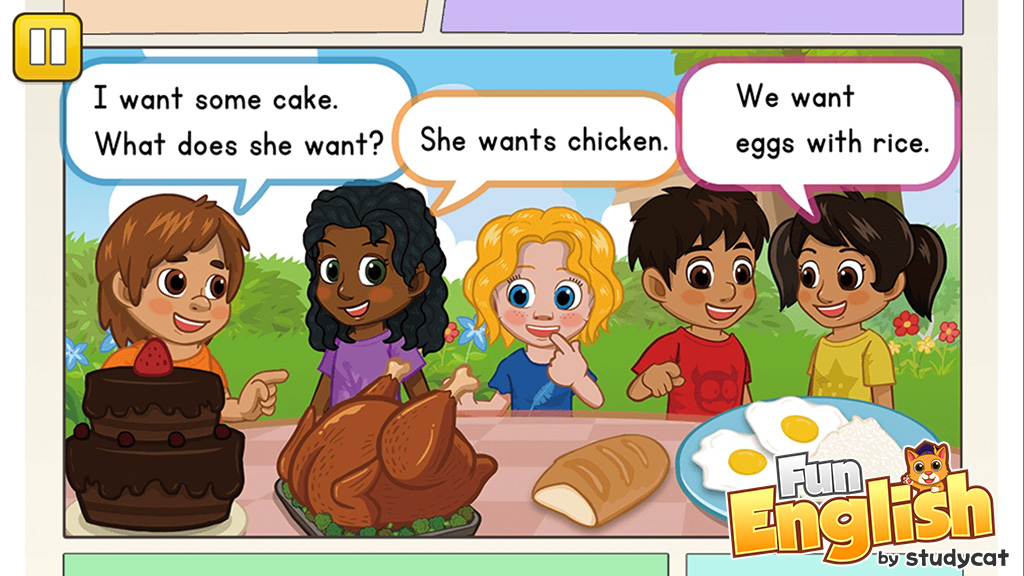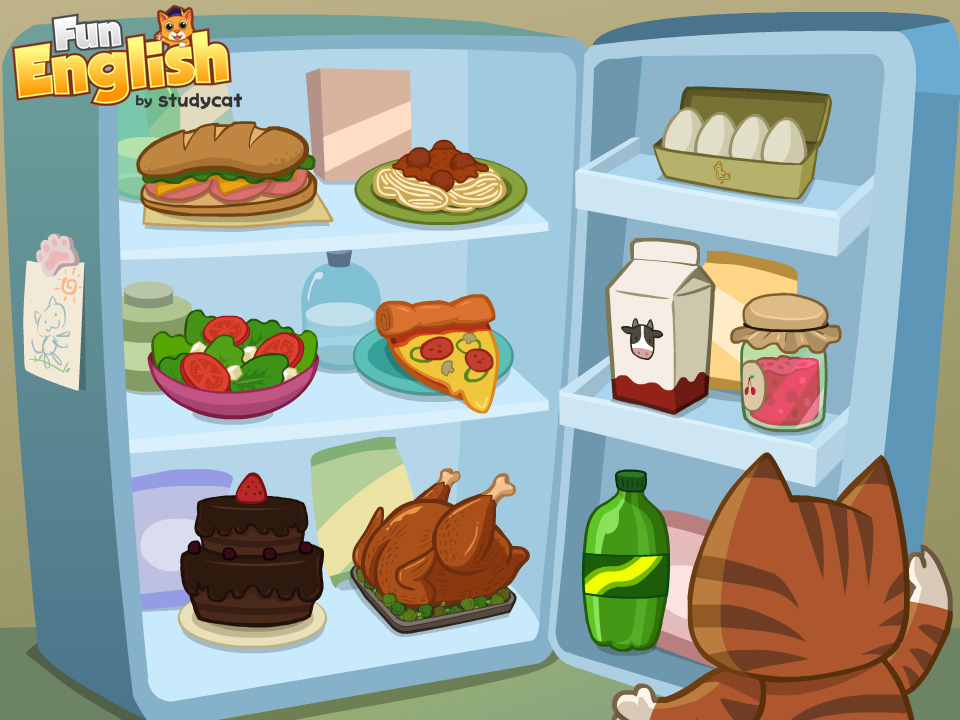
What is a simple dialogue?
A simple dialogue is a short conversation between two people using simple sentences. Here is an example:
Mother: What do you want to eat?
Daughter: I want to eat cookies!
Make our simple dialogue longer:
Mother: What do you want to eat?
Daughter: I want to eat cookies!
Mother: Do you want ice cream too?
Daughter: Yes, I do. (or) No, I don’t.
You will find many examples of simple dialogues in Fun English by Studycat.
First, teach vocabulary using pictures.
Use pictures to teach your child before you begin practicing the dialogue. Point to the picture of a food and ask your child to repeat the word after you. When your child can point to several pictures of food and say the words, then begin to teach the dialogue.
In our example dialogue the words cookies and ice cream were in italics. Any other words for foods could fit into those spaces. For example:
Mother: What do you want to eat?
Daughter: I want to eat chicken!
Mother: Do you want rice too?
Daughter: Yes, I do. (or) No, I don’t.
Fun English teaches and reviews a wide variety of vocabulary words to go with each simple dialogue
Patience is key.
Follow these steps:
- Say the word and have your child repeat after you.
- Identify and say the word together with your child.
- Let your child identify and say the word on their own.
Don’t be discouraged if your child needs to repeat a lot before they can say it alone, or if they forget what they’ve practiced. Learning a new language is hard! Have fun and make sure to encourage your child, telling them how much you love learning English with them.
Allow your child to ask the questions as well. Tell your child that it is her turn to “be the mommy” and to ask you what you want to eat.
Review the dialogue outside of study time with new vocabulary.
Let’s look at our simple dialogue again:
Mother: What do you want to eat?
Daughter: I want to eat chicken!
Mother: Do you want rice too?
Daughter: Yes, I do. (or) No, I don’t.
Now that you’ve learned this, whenever your child asks for a snack, respond in English with “What do you want to eat?”
Your child might not know the English words for the foods in your refrigerator. This is a perfect time to teach those words. Real things are even more engaging than picture vocabulary.
If you don’t know the English words for the foods in your refrigerator, that’s just fine. Find those words online with your child next to you. Show your child how happy you are to be learning new English words.
Be silly. Have fun.
The teachers at Studycat know that keeping a child interested in words and dialogues is the most difficult and the most necessary part of a teacher’s job. This is where the silliness and fun come in.
 Try this:
Try this:
Mother: What do you want to eat?
Daughter: I want to eat chicken!
Mother: Do you want SPIDERS too?
Make your hand move like a spider. Open your eyes wide and make a silly face. Your child will laugh and yell “NO, I DON’T!”
Chances are, your child will want to ask you a silly question. Playfulness is how teachers keep dialogues fresh and interesting.
Don’t forget us!
The Fun English app by Studycat has many simple dialogues for you to practice with your children. Each dialogue comes with pictures and lots of vocabulary. We hope you find it both useful and enjoyable for you and your child.
Follow the Studycat community on Facebook for more expert language learning advice »
![]() Join the Studycat Club to access Fun English language learning resources »
Join the Studycat Club to access Fun English language learning resources »




